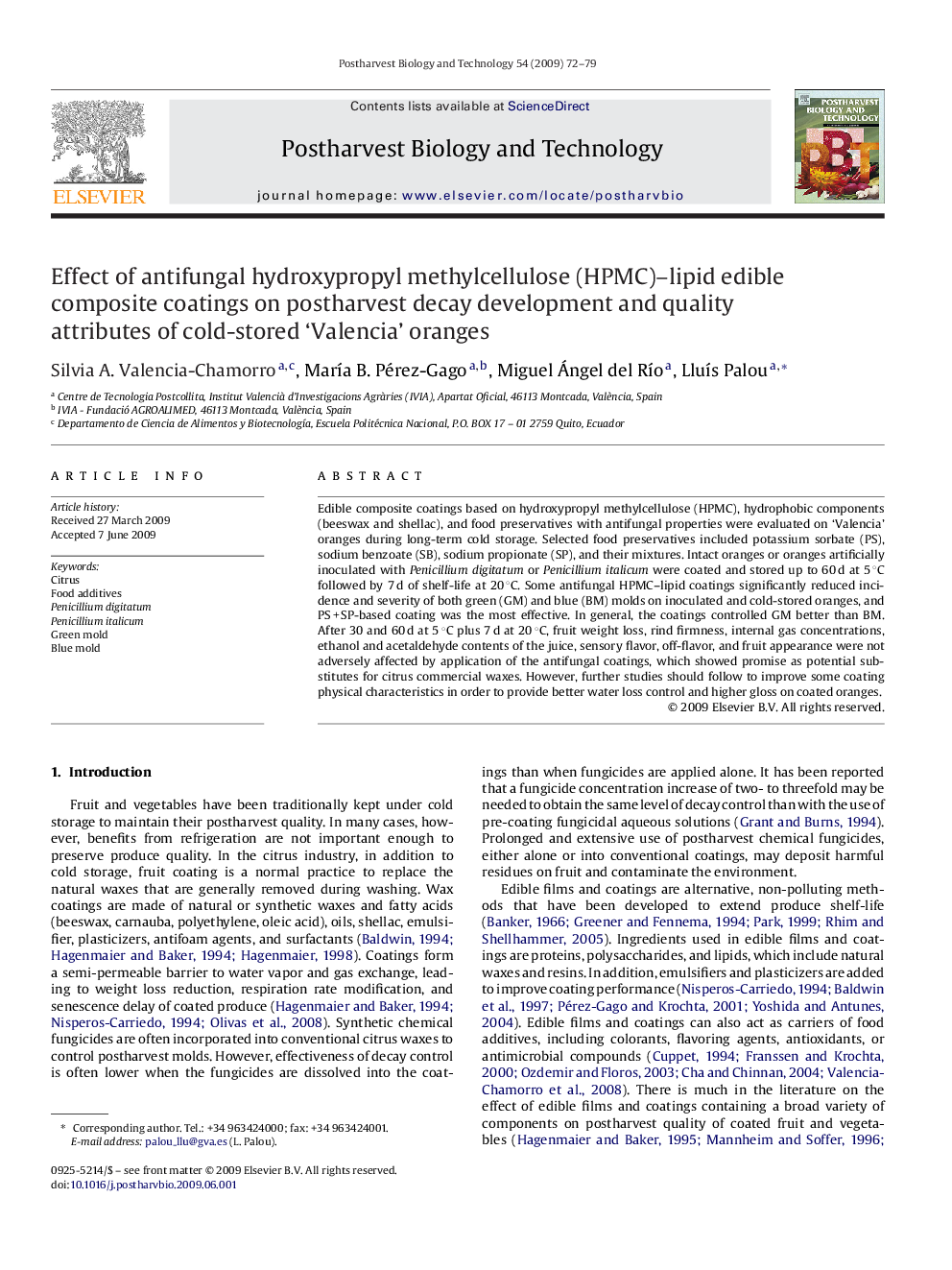| Article ID | Journal | Published Year | Pages | File Type |
|---|---|---|---|---|
| 4519309 | Postharvest Biology and Technology | 2009 | 8 Pages |
Edible composite coatings based on hydroxypropyl methylcellulose (HPMC), hydrophobic components (beeswax and shellac), and food preservatives with antifungal properties were evaluated on ‘Valencia’ oranges during long-term cold storage. Selected food preservatives included potassium sorbate (PS), sodium benzoate (SB), sodium propionate (SP), and their mixtures. Intact oranges or oranges artificially inoculated with Penicillium digitatum or Penicillium italicum were coated and stored up to 60 d at 5 °C followed by 7 d of shelf-life at 20 °C. Some antifungal HPMC–lipid coatings significantly reduced incidence and severity of both green (GM) and blue (BM) molds on inoculated and cold-stored oranges, and PS + SP-based coating was the most effective. In general, the coatings controlled GM better than BM. After 30 and 60 d at 5 °C plus 7 d at 20 °C, fruit weight loss, rind firmness, internal gas concentrations, ethanol and acetaldehyde contents of the juice, sensory flavor, off-flavor, and fruit appearance were not adversely affected by application of the antifungal coatings, which showed promise as potential substitutes for citrus commercial waxes. However, further studies should follow to improve some coating physical characteristics in order to provide better water loss control and higher gloss on coated oranges.
